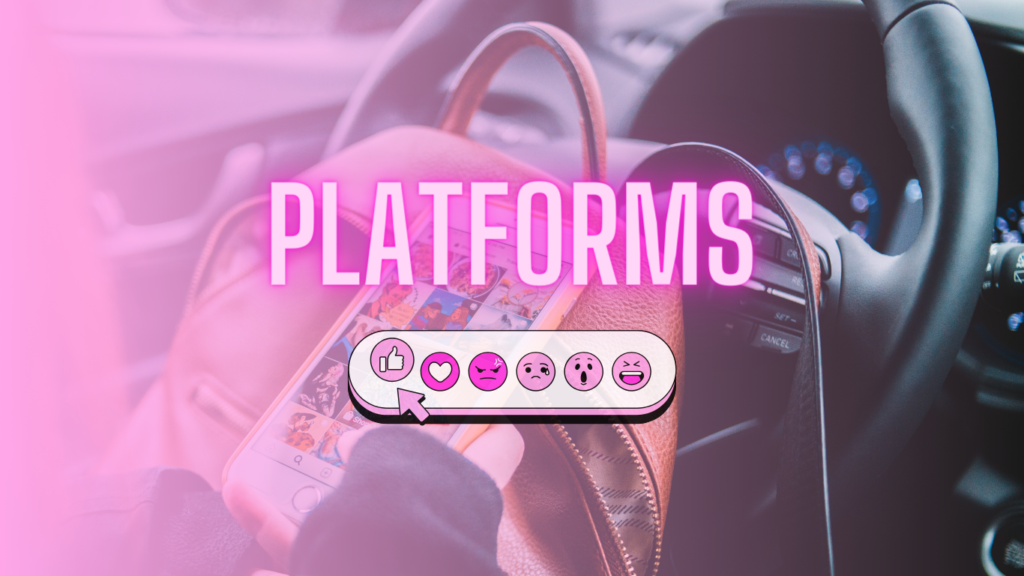
On this page I’m talking about Social Media and other Digital Apps. How do I use them daily in my work? What are the pros and cons of using social media? What are the key elements of a successful digital app? If I had to pick 5 new apps to use, which ones I’d pick and why?
Social Media in My Daily Work
I work as an all around marketing / communications / content coordinator for an organization that offers occupational health care services for thought and knowledge workers, therapy and mind care services, and a variety of organizational development and leardership services.
For me it obviously is important to get the companys message spread as wide as possible and that’s why pretty much all the popular channels of Social Media are quite familiar to me.
In my daily work I use Instagram, Facebook and LinkedIn. For planning and scheduling posts we use Canva and Buffer. We use Google Analytics for figuring out how people are finding their way to our website and what are they doing there. And for running the website itself we use WordPress.
For communicating with each other in my team and other members in the company, we use Googles services, Slack, WhatsApp and a selection of other apps/services we feel help us to organize or keep track of all the ongoing projects and tasks.
The Pros and Cons of using Social Media
In this chapter I’m evaluating and reviewing the positive and the negative sides of using Social Media. I think that the pros are “heavier” and more powerful here than the cons, but to tackle the cons one must need patience and and find a way around them.
So let’s start with the negatives (mainly from a business point of view):
1. Building a strong social media presence takes time
2. Because of this the ROI is slow (or it’s very difficult to measure)
3. Social Media platforms don’t really support business accounts (accounts get “shadowbanned”, their posts don’t get the same kind of engagement as of personal accounts’ etc.)
4. It’s difficult to create a social media strategy that really resonates with your demographic
5. No need for fact checking – it’s easier to spread incorrect information
…and now the pros
1. Let your target demographic know your company better: visual, tone of voice, behind the scenes
2. Connect authentically with people by being involved in conversations across channels
3. Strengthen your brand image and brand awareness –> reach wider audiences
4. As people begin to trust you more (brand loyalty), the ROI grows –> people click on your website more and this results in sales
5. Social Media marketing (organic and paid) is still somewhat affordable, even with just a 10€ campaign you can see some results if it’s done right and you know who you’re targeting.

Apps I could utilize in my daily work:
In the assignment for this particular section, there was a list of different Apps from which I have to choose five NEW ones and describe how I could utilize them in my daily work. After some pondering and wondering I chose the following five:
WhatsApp
We actually have just recently started discussions on starting to utilize WhatsApp in guiding and helping our potential customers with buying occupational healthcare from our online store. WhatsApp Business App for smaller businesses – like the company I work for – offers a channel for reliable and fast communication in real time, with a real person. Even though this sounds cool and talking to a real person in real time is a huge bonus, it requires a lot of resources – someone from our sales team would have to be alert and ready to reply to people pretty much their entire work day and that would be resources away from something more important and productive. I’m sure WhatsApp Business allows some kind of automation integrations – autoreplys or something – then we wouldn’t need someone to be “on-call” everyday.
I wanted to read the three reference stories they have available on their website – but the links didn’t work, so I guess now I’ll never know the true potential of WhatsApp Business.
Jodel
So I would’ve never really considered Jodel if it wasn’t for this assignment. But I did some research and found out that it could actually be a pretty effective channel for reaching out specifically to millenials and gen Z. Even though the company I work for offer services mainly for organizations, it also offers some B2C services too, where the demographic is pretty much young adults. Therefore, creating some display ads for Jodel wouldn’t be such a bad idea. On top of this, Jodel seems like a good place to create brand awareness and share information on upcoming events (livestreams etc) and product launches.
TikTok
I think this is a no-brainer. Pretty much everyone is on TikTok right now. We want to offer occupational healthcare services and work ability consulting for small businesses and more and more small business owners can be reached these days via the most popular social media channels – and the most popular right now is TikTok.
Basic, ad-like videos don’t work here though (nor do they work anywhere else). If we truly wanted to connect with people and make a difference, or make people believe in our service – we need to create videos that actually SPEAK to people. Videos that are RELEVANT and videos that offer solutions to everyday situations.
It’s easy to also run ad campaigns on TikTok, but here I’d rather focus on creating organic unpaid content.
YouTube
We already DO utilize YouTube in my organization, but I do think we could use it even more. Right now we share videos on YouTube-shorts and upload webinars and other longer videos on the “regular side” of YT. But as other students have stated in their course-blogs: video is dominating the content market right now. Especially shorter videos: 30 sec to 1 minute shorts and regular videos that are less than 10 mins long. I know video production takes time and patience – the videos need to be well thought and cannot look too polished or too much like plain advertisements. But the experts in my organization all have very interesting and valuable opinions and knowledge, and if we could get their messages across to wider audiences we’d see it also in the ROI.
Monday
My work weeks are a MESS. I do a little bit this and a little bit of that. We have a few large ongoing projects and many small “side quests” in the mix too. That’s why it’s super important to me to see what’s going on with just one glance.
I’m a very visual person, therefore bornig and basic task management apps won’t work for me. I get creative and remember things better once they’re color coded and organized. With Monday we could also plan and collaborate with other teams efficiently – kinda like in Trello, but for some reason Monday speaks to me more with it’s user friendliness and potential to kinda do everything under one umbrella.
Elements of Successful Digital App + Self Evaluation
When ever I start using a new app (for work) I pay attention to the following:
– Over all user experience: Does it save me time / other resources, how fast it’s loading, do they offer customer/user support etc, is it visually pleasing
– How does their data protection work, what’s their user protection policy?
– If I have to pay for it (like a monthly subscription) – is it worth it? What can I achieve with it?
– Does it GIVE me more than what it TAKES
– Does it work well both in mobile + desk top (and does it matter)
– Can I use it with other apps (integrations ie. connecting to other marketing or automation apps)
I think these are the key ingredients to a successful digital app.
Self Evaluation: What did I learn during this assignment?
I did some closer research on the apps that I’ve been using for work and approaching them from a different angle: why do we actually use this channel? Have we achieved with this what we’ve wanted to? Should we re-evaluate our goals and methods when it comes to this particular channel?
After some thinking and researching I came to the conclusion that in my work we use exactly the channels that we need to be using right now. The more we add to the mix, the more it requires from US – and if we try to be in all channels at once, this can lead into chaos.
What many comanies think and do, is that they try to do it all. Have podcasts, YouTube, TikTok, Instagram, Facebook, Twitter, blogs, vlogs, media visibility…and often times they just do this for the sake of brand awareness. Awareness is usually a good thing, but when you use all of these channels but not really knowing who your key demographic is – you’re doing it all in vain. People know the name of “Company X” but if no-one knows what they’re doing, what do they stand for, who do they offer services to – its all for nothing.
That’s why its crucial for companies to know who they’re wanting to reach, why would these people buy from them and WHAT SOCIAL MEDIA CHANNELS THEY USE. When you have answers to these questions it’s easier to start building a social media strategy. For example it would be silly to try target teenagers in Facebook or elderly folk in SnapChat.
Thank you for reading my blog!
If you want to share your thoughts with me, just leave a comment here below! 🙂